Video
tumblr
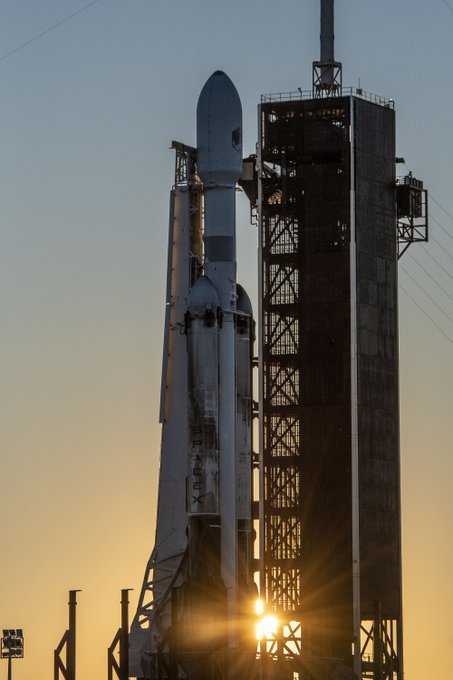
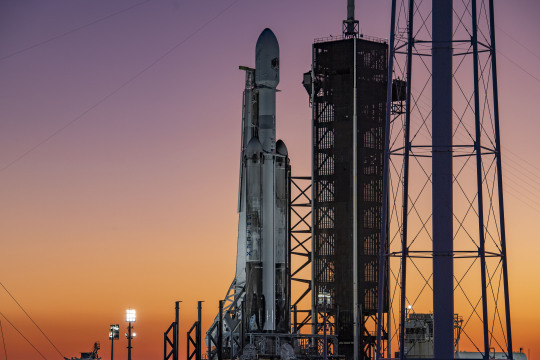
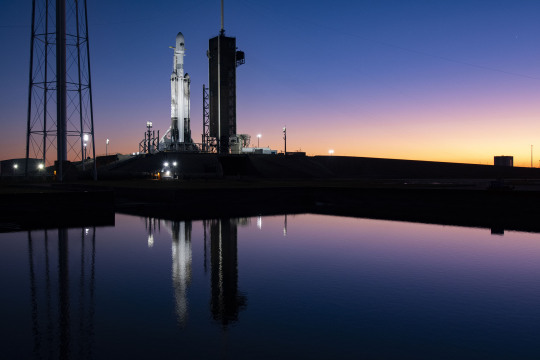
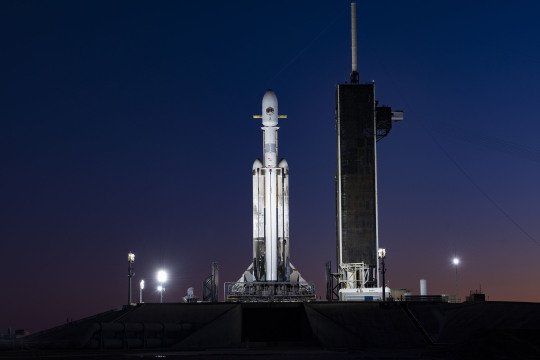
SpaceX’s Falcon Heavy Rocket Launch
SpaceX’s Falcon Heavy rocket, the towering launch vehicle known for its boosters’ aerial acrobatics and synchronized landings when returning to Earth, took to the skies Sunday, delivering national security payloads to orbit for the US military.
The mission, called USSF-67, took off at 5:56 p.m. ET from Kennedy Space Center in Florida, marking the fifth successful flight of the rocket recently dethroned as the world’s most powerful operational launch vehicle. This mission was initially advertised to launch on Saturday, and the reason for the one-day delay was not immediately clear.
#spacex#spacex’s falcon heavy rocket#ussf-67#kennedy space center#rocket#rocket launch#space#spaceship#elon musk
58 notes
·
View notes
Text
Falcon Heavy orbits classified USSF-67 Space Force payload
Falcon Heavy orbits classified USSF-67 Space Force payload
A Falcon Heavy launches from Kennedy Space Center’s Launch Complex 39A to send the USSF-67 mission into space. Credit: Theresa Cross / Spaceflight Insider A classified payload for the United States Space Force, USSF-67, was lofted into orbit by a SpaceX Falcon Heavy rocket just after sunset in Florida. Continue reading Untitled
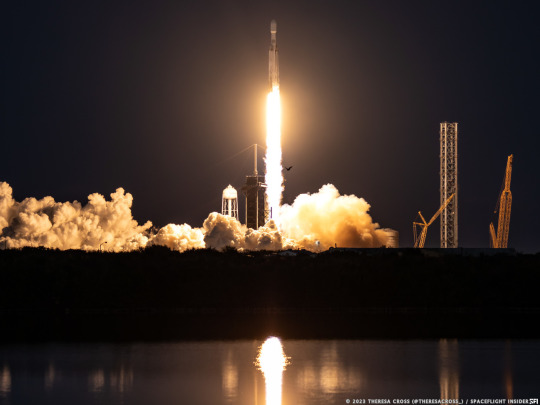
View On WordPress
0 notes
Text
Le 15 janvier 2023 au-dessus des Îles Turks et Caïques à 10 000 mètres d'altitude, un commandant de bord a filmé depuis le cockpit de son avion Airbus A321 la séparation et l'allumage du 2e étage de Flacon Heavy (SpaceX). Le vol commercial avait décollé d'Aruba et se rendait à Toronto au Canada. Le décollage de Falcon Heavy a été réalisé dans le cadre de la mission USSF-67. Elle qui a permis de placer sur orbite géosynchrone des satellites pour le compte de l’US Space Force
4 notes
·
View notes
Text
Launch from earlier today. You can fast forward the video closer to launch time. Falcon Heavy.
2 notes
·
View notes
Photo
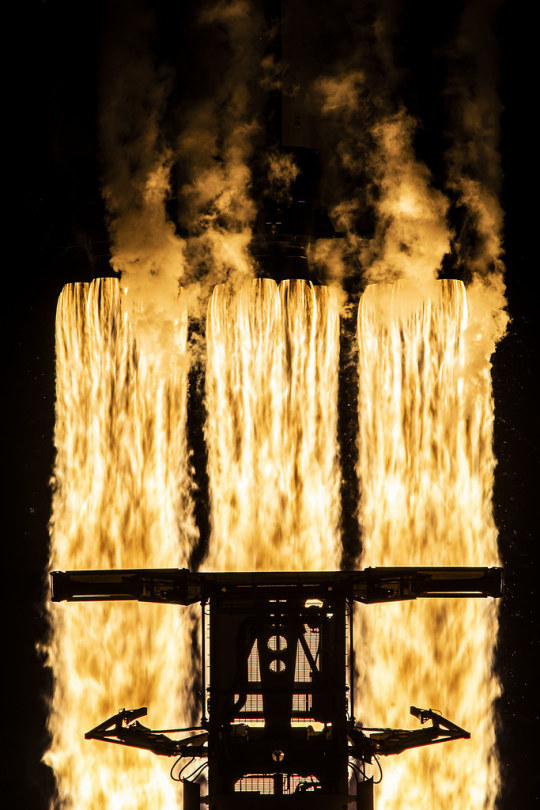
USSF-67 Mission by Official SpaceX Photos https://flic.kr/p/2ocfokx
1 note
·
View note
Text
Falcón Heavy encamina el viaje de la nave espacial Psyche misión al asteroide metálico
Hoy viernes 13 de octubre a las 10:19 am ET, Falcon Heavy lanzó la misión Psyche de la NASA a una órbita de transferencia interplanetaria desde el Complejo de Lanzamiento 39A (LC-39A) en el Centro Espacial Kennedy en Florida Este fue el cuarto lanzamiento de los propulsores laterales, los cuales anteriormente apoyaron las misiones USSF-44, USSF-67 y Hughes JUPTER…
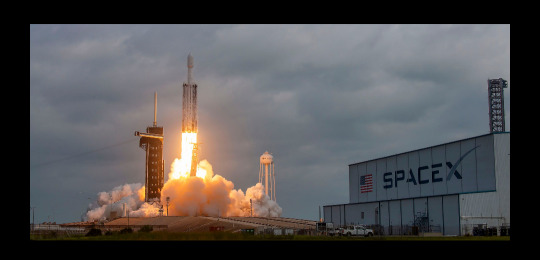
View On WordPress
0 notes
Link
[ad_1] A Falcon Heavy rocket launches the USSF-67 mission on January 15, 2023 from NASA's Kennedy Space Center in Florida.SpaceXThe U.S. military is raising the stakes — and widening the field — on a high-profile competition for Space Force mission contracts.The Space Force plans to buy even more rocket launches from companies in the coming years than previously expected, granting more companies a chance at securing billions in potential contracts."This is a huge deal," Col. Doug Pentecost, the deputy program executive officer of the U.S. Space Force's Space Systems Command, told reporters during a briefing this week.Earlier this year the Space Force kicked off the process to buy five years' worth of launches, under a lucrative program known as National Security Space Launch (NSSL) Phase 3. Now it's boosting the scale.The U.S. sees a rising impetus to improve its military capabilities in space, spurring the need to almost triple the number of launches in Phase 3 that it bought in Phase 2 in 2020."That just blows my mind," Pentecost said. "We had only estimated 36 missions in Phase 2. For Phase 3, we're estimating 90 missions."Sign up here to receive weekly editions of CNBC's Investing in Space newsletter.In February, Space Force outlined a "mutual fund" strategy to buying launches from companies. It split NSSL Phase 3 into two groups. Lane 1 is the new approach, with lower requirements and a more flexible bidding process that allows companies to compete as rockets debut over the coming years. Lane 2 represents the existing approach, with the Space Force planning to select a set number of companies for missions that meet the most demanding requirements.Pentecost said Space Force hosted an industry day in February to go over the program's details and had 22 companies show up. Since then, Space Force made a number of adjustments to Phase 3. It has added more missions, introduced a price cap, expanded Lane 2, and has set an annual schedule for mission assignments.The government weighs bids by a company's "Total Evaluated Price" per launch. That's split into "Launch Service," meaning how much it costs to build and launch a rocket, and the "Launch Service Support," which covers special requirements the military may have for launch. The Launch Service Support amount is capped at $100 million per year per company."We implemented some cost-constraining tools so that we don't balloon. We don't want [a situation where] everybody gets a mission — you get a mission, you get a mission, you get a mission — because then there's no real competition," Pentecost said."We do think that all of our industry partners want to be the number one guy, so we think that will provide competitive pricing to keep our costs down," Pentecost added.Widening Lane 2While Lane 1 is expected to draw the largest number of bids and award 30 missions, Lane 2 is the big show.With Lane 2, Space Force gives out the most valuable contracts to launch national security satellites with the highest stakes. "These are the ones that are a $1 billion [satellite] payload going to unique orbits," Pentecost said.Not only has Lane 2 seen an increase in how many missions are up for grabs — currently estimated at 58 launches, up from 39 in February — but Space Force also made the decision to expand the available slots for eventual awards to three companies, instead of limiting it to two.Elon Musk's SpaceX and United Launch Alliance, the joint venture of Boeing and Lockheed Martin, were assumed to be the two leading contenders for Lane 2, but now there's a door open for another company like Jeff Bezos' Blue Origin.Space Force will assign 60% and 40% of 51 missions to the top two bidders, respectively, and the remaining seven launches will go to the third-place bidder. Regardless of where a company ranks, it must demonstrate that it can meet all the Lane 2 requirements, which include having launch sites on both the east coast and west coast, and the ability to hit nine "reference" orbits with high accuracy several of which are much further from Earth than the low Earth orbit requirement of Lane 1.Asked by CNBC how many companies are developing rockets that can meet those requirements by the deadline for launches, a Space Force spokesperson declined to specify, saying the military is "tracking several" that are "expanding their launch capabilities into most of these orbits.""We're hoping that it's not just ULA, SpaceX and Blue Origin competing for that, as there are others who have messaged interest in the past," Col. Chad Melone, the chief of Space Systems Command's Launch Procurement and Integration division, said during the briefing.Securing supplySpace Force is introducing an annual Oct. 1 deadline for assigning missions to companies that have won a contract.Pentecost explained the first assignments are up for grabs in October 2025, but noted contracts don't guarantee assignments, which protects Space Force from delays companies may have in developing and flying rockets."You could actually have won the contract, that you've got this great plan on how you're going to be flying by [fiscal year] 2027. But since you're not flying yet, and I have a satellite that needs to fly in two years, we will not give you that mission — we will move it to the other guy," Pentecost said.Space Force aims to finalize its request for bidders by September and then have all the proposals in by December, to then award the contracts in October 2024.Space Force officials said a big driver of that push is to "guarantee capacity," as there are "a ton of other companies" trying to buy launches for satellites and Space Force needs to lock down its orders."We wanted to make sure that we essentially hedged against the launch scarcity that could happen because, if there's a very large demand for launch and everyone is [buying], prices could be very high," Melone said.But despite that fear, Pentecost said 2026 "seems to be the sweet spot" when a number of companies' rockets will be done with development and ready to fly. And companies that stay on track will have the upper hand in NSSL Phase 3."If you're flying before that, or if your schedule is showing that you're going to be flying before that, you will get significant strengths, which will put you in a better position to win the best provider or second best in this competition," Pentecost said. [ad_2]
0 notes
Text
Senate defense panel leaves National Security Space Launch unsecured
A SpaceX Falcon Heavy on Jan. 15, 2023, launched USSF-67, a national security mission carrying multiple payloads, including three developed by the Space Rapid Capabilities Office. Credit: SpaceX Erik Seedhouse, Ph.D. is an Associate Professor of Spaceflight Operations at Embry-Riddle Aeronautical University In the misguided effort to promote increased competition, the U.S. Senate Armed Service…
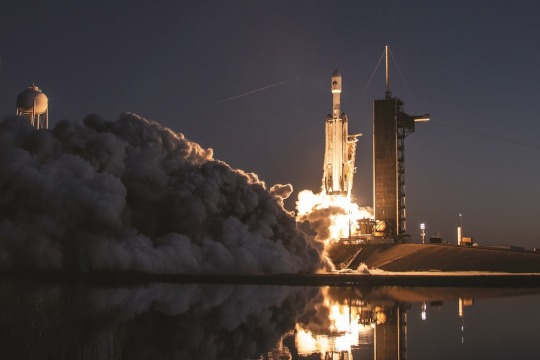
View On WordPress
0 notes
Text
The gold rush for the next round of military launch contracts has started#gold #rush #military #launch #contracts #started
Enlarge / A Falcon Heavy rocket launches the USSF-67 mission for the US Space Force in January 2023. SpaceX The US military recently released a rather mundane-sounding document titled “National Security Space Launch Phase 3 DRAFT Request for Proposals #1.” That may be a mouthful of jargon, but it’s still a rather consequential document. Effectively, its release is the starting gun for the next…
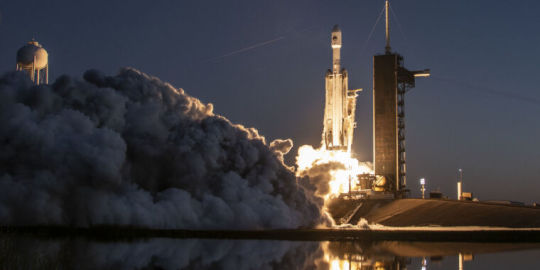
View On WordPress
0 notes
Text
See photos of SpaceX Falcon Heavy's gorgeous Sunday launch
SpaceX’s powerful Falcon Heavy rocket launch stunned viewers across Florida’s space coast this weekend. A Falcon Heavy lifted off on Sunday (Jan. 15) from NASA’s Kennedy Space Center in Florida on a classified mission for the U.S. Space Force called USSF-67. The Falcon Heavy is the most powerful SpaceX rocket currently in operation. It features three modified first stages of the Falcon 9 rocket…
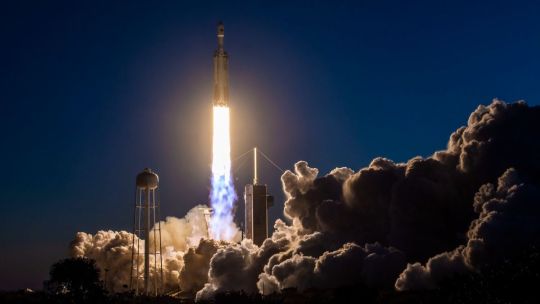
View On WordPress
0 notes
Photo
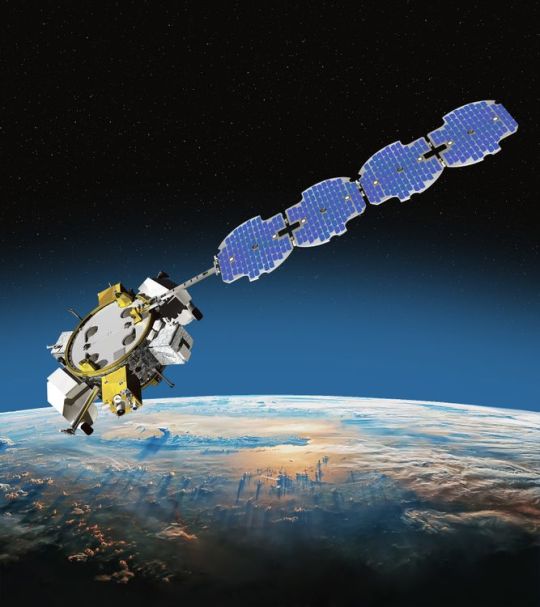
Northrop Grumman Corp's Long Duration Propulsive ESPA (LDPE)-3A spacecraft reached orbit on Sunday as part of the U.S. Space Force's USSF-67 mission. This marks the third successful launch in the LDPE program. [Full story]
0 notes
Text
0 notes
Text
This Saturday, SpaceX prepares to launch the USSF-67 mission for the U.S. Space Force from Florida's Space Coast.
This Saturday, SpaceX prepares to launch the USSF-67 mission for the U.S. Space Force from Florida’s Space Coast. The Falcon Heavy rocket is set to take off at 5:55pm, Jan 14th, from LC-39a at NASA’s Kennedy Space Center and weather conditions are projected a favorable 80-90% Gor for Launch Full duration static fire of Falcon Heavy complete; targeting no earlier than Saturday, January 14 for…

View On WordPress
0 notes
Text
Falcon Heavy launch this weekend, with double sonic booms
This Saturday, SpaceX prepares to launch the USSF-67 mission for the U.S. Space Force from Florida's Space Coast, with Double Sonic Booms 8 minutes after launch
This Saturday, SpaceX prepares to launch the USSF-67 mission for the U.S. Space Force from Florida’s Space Coast. The Falcon Heavy rocket is set to take off at 5:55pm, Jan 14th, from LC-39a at NASA’s Kennedy Space Center and weather conditions are projected a favorable 80-90% Gor for Launch Full duration static fire of Falcon Heavy complete; targeting no earlier than Saturday, January 14 for…

View On WordPress
#SpaceCoast#VisitTitusvilleFL#City of Titusville#Kennedy Space Center#Mims#NASA#Space Coast#SpaceX#Titusville
1 note
·
View note
Text
U.S. Space Force Awards NSSL Phase 2 Launch Service Contracts to ULA, SpaceX
#USSpaceForce awards NSSL Phase 2 launch service contracts to #ULA, #SpaceX.
The U.S. Space Force (USSF) Space and Missile Systems Center (SMC), in partnership with the National Reconnaissance Office (NRO), competitively awarded two National Security Space Launch (NSSL) Phase 2 contracts to United Launch Alliance LLC (ULA) and SpaceX on Aug. 7.
The NSSL Phase 2 contract is a firm-fixed-price, indefinite-delivery requirements contract for launch service procurements…
View On WordPress
#National Security Space Launch (NSSL)#Space and Missile Systems Center (SMC)#SpaceX#U.S. Space Force (USSF)#United Launch Alliance (ULA)#USA#USSF-106#USSF-51#USSF-67
0 notes